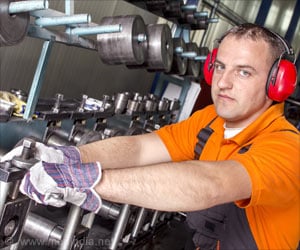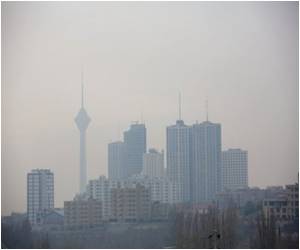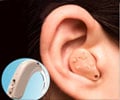Noise pollution in hospitals is a rising issue as it is regularly exceeding international recommendations, according to a new study.

‘One in ten patients is discharging themselves early from the hospital as the wards are too noisy at night.’
Read More..




"Even in intensive care units, which cater for the most vulnerable patients, noise levels over 100dB have been measured, the equivalent of loud music through headphones," said lead author Dr. Andreas Xyrichis.Read More..
Noise in hospitals is known to hinder communication among staff, causing annoyance, irritation, and fatigue, and detrimentally impact the quality and safety of healthcare. High noise levels and noise-induced stress impact negatively on staff performance and wellbeing, compromising caring behavior and contributing to burnout.
The team highlight that it can also impact a patients' ability to rest, heal and recover, since it has been linked to the development of ICU psychosis, hospitalization-induced stress, increased pain sensitivity, high blood pressure and poor mental health.
"We know hospital noise has disruptive consequences for sleep - machine sounds, in particular, have a greater negative effect on arousal than human voices. Post-hospitalization recovery is also compromised. For example, coronary care patients treated during noisy periods were found to have a higher incidence of rehospitalization compared to those treated during quieter periods," explained Andreas.
Patients report that hospital noise can have a cumulative effect on their hospital experience. Patients who are in the hospital for several nights are left feeling trapped and stressed, leading to requests for premature discharge from hospital and heightened risk of trauma and readmission.
Advertisement
- Noise is often incorrectly associated with high sound pressure levels (SPLs). Dripping taps, for example, may register low SPLs yet still be considered noisy. Prioritizing SPL reduction does not ensure improved noise perception. Therefore, a new approach is needed, one that views the hospital soundscape as a positive and malleable component of the environment.
- There are a number of potential sources of noise in hospitals. Alarms, televisions, rattling trolleys, and ringing phones, as well as staff, visitor, and patient conversations. However, not all of them are perceived as noise by patients - for example, some find the sound of the tea trolley pleasing, associating it with receiving a warm drink. Research has also shown that some ICU patients welcome ringing telephones as a sign that they are not alone. So far ways to measure patients' perceptions of noise are limited, and more research investment is needed in this area.
- Patients and families need clear information about likely noise levels during admissions, so they are better prepared in advance, and can consider simple solutions such as headphones with their own choice of audio content. Education for staff is also needed, to encourage a culture that considers noise reduction an integral part of safe high-quality healthcare.
"Measures to tackle this problem have included earplugs, noise warning systems, acoustic treatment panels, educational initiatives, and noise reduction protocols, which have provided some benefit," said Andreas.
Advertisement
"Guides about potential ward sounds could also enhance patients' understanding of their surroundings and increase relaxation. Sound masking - the addition of background, broadband sound optimized for particular environments to reduce noise-induced disturbance - has also been used widely in open-plan offices for many years and has recently shown promise for improving sleep in hospitals."
Source-Eurekalert











